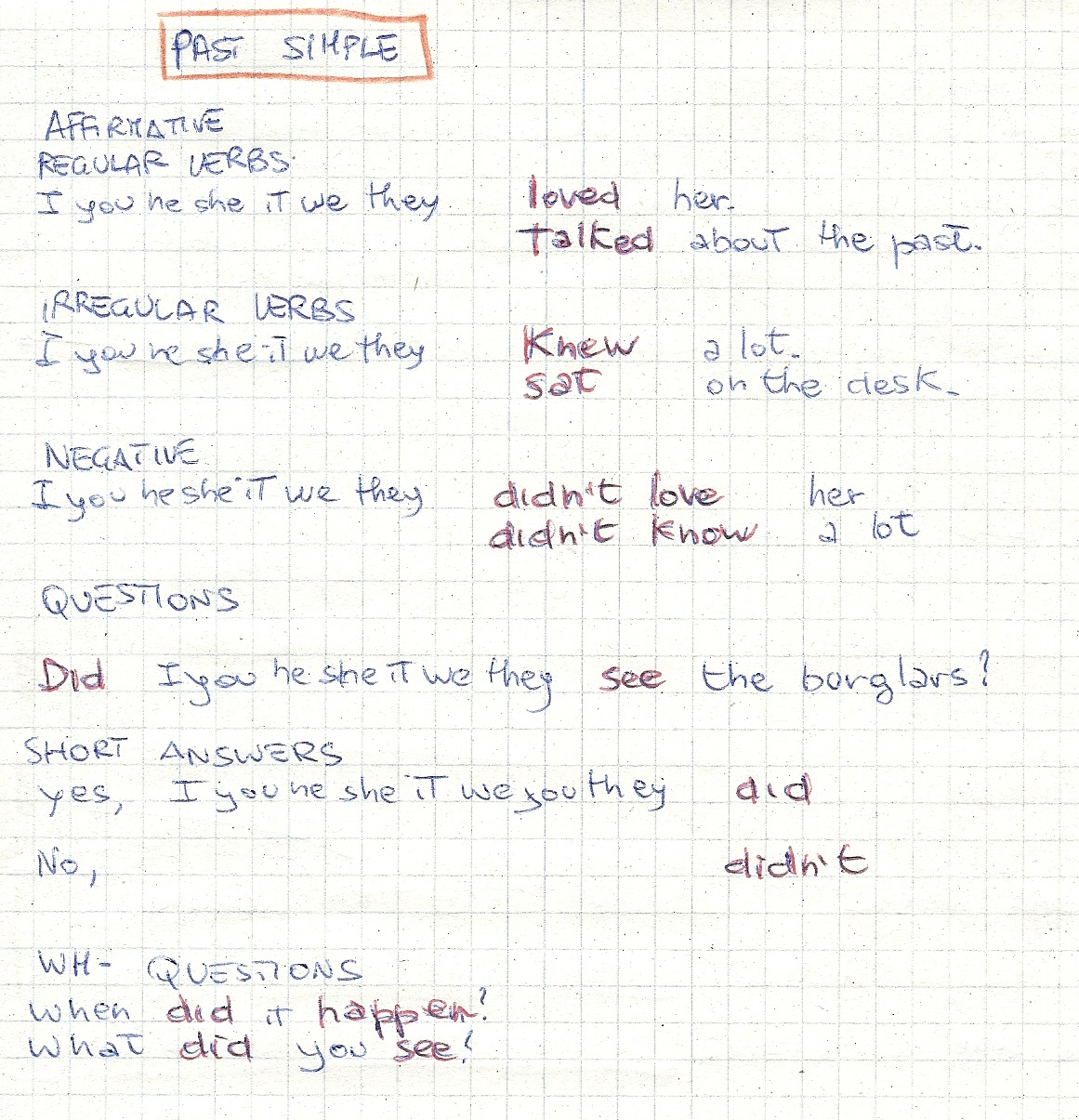Today we are going to look at how to form the past simple of regular verbs in the affirmative in English. There are a few things to bear in mind so let’s get started.
The past simple of regular verbs is formed by adding -ed to the base form of the verb (the infinitive without “to”). For example:
Il passato semplice dei verbi regolari si ottiene aggiungendo –ed alla forma base del verbo (l’infinito senza il “to”). Per esempio:
work – worked
wash- washed
watch – watched
jump – jumped
Take a look at some example sentences with the above regular past simple verbs:
John worked all day yesterday.
Ieri John ha lavorato tutto il giorno.
I washed my hair last night.
Mi sono lavato i capelli ieri sera.
Susan watched the football match on TV two days ago.
Susan ha guardato la partita di calcio in tv due giorni fa.
They jumped for joy when we told them our great news.
Hanno fatto i salti di gioia quando abbiamo detto loro la bella notizia.
* Remember that the past simple form of regular verbs is the same for all persons (I, you, he, etc).
* Ricorda che il passato semplice dei verbi regolari è identico per tutte le persone (I, you, he, ecc).
It’s also important to remember that there are a few rules to bear in mind when changing verbs into the regular past form:
• For regular verbs ending in the vowel –e, just add –d, for example,
Nei verbi regolari che terminano con la vocale –e, si aggiunge solo –d, per esempio:
hate – hated
hope – hoped
free – freed
• For some verbs that end in a vowel other than –e, add –ed, for example,
Nei verbi che terminano con una vocale diversa da -e, si aggiunge -ed, per esempio:
ski – skied
echo – echoed
• For regular verbs that end in a consonant -y, change the-y to -i and add-ed, for example,
Nei verbi regolari che terminano con -y, si sostituisce -y con -i e si aggiunge -ed, per esempio:
cry – cried
try – tried
dirty – dirtied

